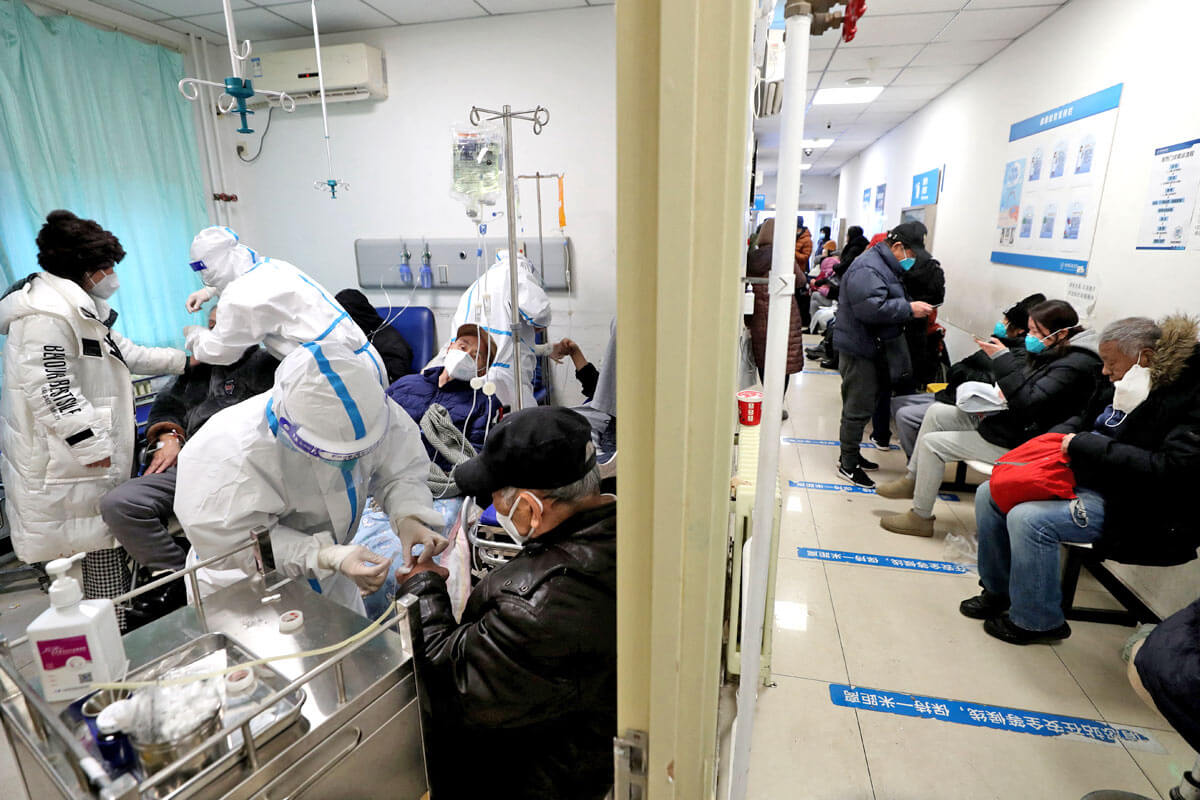Up to 70% of the population of the Chinese megacity of Shanghai may have been infected with COVID-19, while the situation in rural areas worsens, as China battles its surging caseload.
SHANGHAI
Chen Erzhen, VP at Shanghai’s Ruijin Hospital and member of the city’s COVID-19 expert advisory panel, estimated that most of Shanghai’s 25 million population may already have been infected.
“Now the spread of the epidemic in Shanghai is very wide, and it may have reached 70% of the population, which is 20 to 30 times more than [in April and May],” he told Dajiangdong Studio, owned by the state-owned media house People’s Daily.
The expert added that Ruijin was handling around 1,600 daily emergency admissions – double the caseload prior to public health restrictions being relaxed. He added that 80% of those were COVID-19 patients.
“More than 100 ambulances arrive at the hospital every day,” he remarked, adding that around half of emergency cases comprised the elderly.
RURAL CHINA
National Health Commission (NHC) official Jiao Yahui said on Monday that dealing with the expected peak in COVID-19 infections in rural areas was going to be an “enormous challenge.” “What we are most worried about is, in the past three years, nobody has returned home for Chinese New Year, but they finally can this year,” he said.
“As a result, there may be a retaliatory surge of urban residents into the countryside to visit their relatives, so we are even more worried about the rural epidemic,” he added.
Beijing has slammed decisions by more and more countries requiring COVID-19 tests from visitors arriving from China, vowing to take "countermeasures" in response.
— DW Asia (@dw_hotspotasia) January 3, 2023
Do you agree with China that the move is ‘unacceptable’? pic.twitter.com/t7IUKDx9WS
DATA AUTHENTICITY
COVID-19 data from China has come under increasing international scrutiny as authorities and state media have been suspected of downplaying the severity of the situation, prompting several countries to impose travel bans on people arriving from China.
On Tuesday, a White House National Security Council official echoed the WHO’s call for China to regularly share specific and real-time information on the outbreak.
“Public health experts and officials, including in the United States, have been clear it is important that the People’s Republic of China (PRC) share more adequate and transparent epidemiological and viral genomic sequence data. This is in the interest of the PRC and the international community and critical to identify any potential variants,” the official said.
Countering this, Jiao insisted that China had always published COVID-19 data “in the spirit of openness and transparency.”
“China has always been committed to the scientific criteria for judging COVID-19 deaths, from beginning to end, which are in line with the international criteria,” the Chinese health expert said.
China has always believed that for all countries, COVID-19 response measures must be science-based and proportionate. They should not be used for political manipulation, Foreign Ministry spokesperson Mao Ning reiterated on Wednesday. pic.twitter.com/aj04RGPP1v
— Zhang Meifang张美芳 (@CGMeifangZhang) January 4, 2023
PREDICTED COVID-19 PEAK
According to a study by the University of Macau and Harvard Medical School, China’s sudden relaxation of public health measures to counter the spread of COVID-19 could kill as many as 1.5 million people over the next six months. The researchers further found that the lack of a “flatten the curve” strategy, combined with China’s current immunity level, will result in more than 1.27 billion people getting infected within three months.
However, China could reduce its possibly grim COVID-19 death toll by more than seven-fold, to less than 200,000 deaths, if authorities implement appropriate public health measures to help slow its spread, increase vaccination rates, and ensure adequate medical supplies. The strategy would also prevent a surge in new infections so that the country’s healthcare system is not overwhelmed. Government data shows that currently, China has only 4.5 intensive care unit beds for every 100,000 people.
The study was published after Beijing rolled back some of its heavy-handed COVID-19 containment measures after violent protests broke out across the country in November, when citizens called for democracy and the downfall of the Chinese Community Party and President Xi Jinping.

